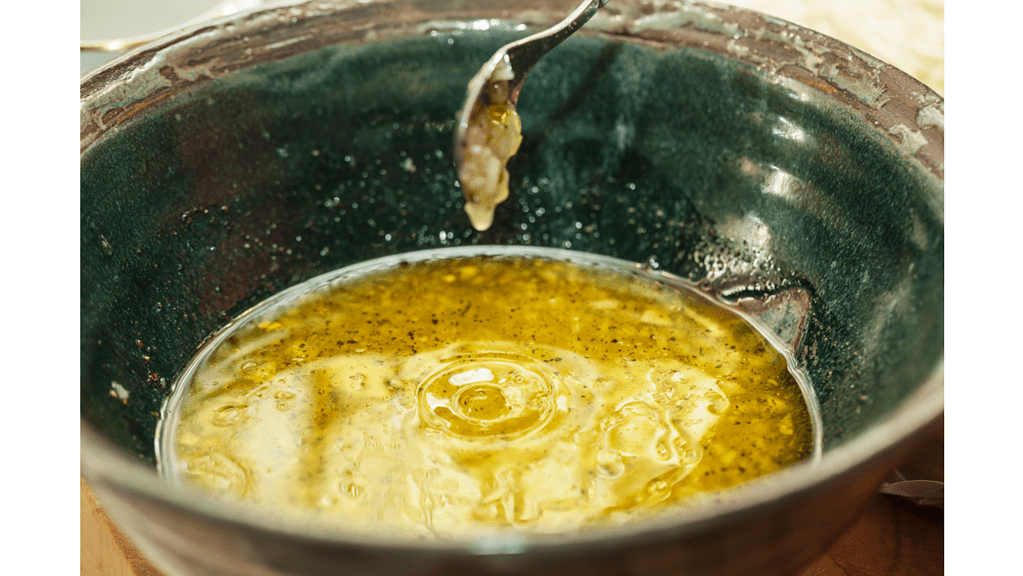You can replace Worcestershire sauce for soy sauce in recipes. It is best to replace it in dishes that require a savory, salty, tangy flavor.
Worcestershire sauce makes a good substitute for those who have allergies or want to reduce their salt intake.
However, because Worcestershire has a different base recipe, it may alter the flavor of your dish, depending on what the dish is.

What’s the difference between soy sauce and Worcestershire sauce?
Worcestershire sauce makes a good substitute because they are fairly similar in terms of ingredients.
Despite its British-sounding name (Worcestershire is a county in the Western Midlands of England), you might be surprised to hear that Worcestershire sauce has East Asian roots!
Like soy sauce, it has sweet, salty, tangy flavors from ingredients like molasses, tamarind, anchovies, and its vinegar base. And like soy, it’s fermented.
However, unlike soy sauce, Worcestershire sauce contains no soy or wheat. Because of its vinegar base, Worcestershire has a stronger flavor, and is more commonly used in small quantities as a condiment.
In a pinch, however, it can be substituted for soy sauce in case of food allergies, or to achieve that delicious soy sauce flavor.
Is Worcestershire sauce a good substitute for soy sauce?

Worcestershire sauce is a good substitute for soy sauce in dishes that require a salty, fermented, umami flavor. Like soy, it can make a sauce taste savory and satisfying, as if it has been “cooked all day.”
It works well in recipes that call for soy sauce as an ingredient because the stronger flavor of Worcestershire can be diluted, “cooked out,” or masked by combination with other ingredients.
However, Worcestershire’s differences are harder to hide in recipes that call for soy as a condiment or a central ingredient. For example, dipping your sushi in Worcestershire, while it might taste good, would make for a noticeable difference.
While it has a stronger flavor, Worcestershire is actually lower in sodium. This is good news for those with high blood pressure, or who need to reduce their sodium intake for health reasons.
The absence of soy and wheat in Worcestershire sauce is also good news for those with allergies.
But be warned: Worcestershire is not necessarily “gluten-free” unless it says so on the label. Moreover, because it typically contains anchovies, Worcestershire is not vegan.
What else can I substitute for soy sauce?

Other substitutes for soy sauce, aside from Worcestershire, include coconut aminos, tamari, and oyster sauce. Like Worcestershire sauce, each has benefits and disadvantages as a substitute for soy sauce.
Coconut aminos are made from the sap of young coconut flowers. This boiled sap is then combined with salt and fermented to produce a thin, dark sauce similar to soy. However, it has a sweeter flavor and may be more expensive.
Tamari is much like soy sauce (some consider it a sub-category), but it’s made with rice, rather than wheat. This makes it a preferred choice for Asian cooking that is sensitive to food allergies. Yet, tamari may be more difficult to find outside of Asian markets.
Oyster sauce, like fish sauce, is often a partner ingredient in recipes that call for soy sauce. Thicker and fishier than soy sauce, it has a similar briny, savory flavor.
But it won’t work for those who are allergic to shellfish, and of course it’s not vegan.

What’s so great about soy sauce?
Soy sauce, also called Shoyu or Soya, is a staple ingredient in many Asian cuisines. Typically, soy sauce is made from soybeans, wheat, water, and salt. The soybeans are soaked. The wheat is roasted and crushed. Fermentation is a key part of the process.
The combination of these ingredients and processes makes for a mild, sweet, salty, tangy, savory flavor.
The savory quality of soy sauce is so distinctive that it has become associated with one of the five “tastes”: umami (the others are bitter, salty, sour, and sweet). Umami is also found in ingredients like cheese, meat, mushrooms, and shellfish.
As a result, soy sauce forms the base of many dishes, and it’s also widely used as a condiment. However, soy sauce contains soy and wheat, both of which produce allergic reactions in some people.
Additionally, soy sauce is high in sodium, which can cause health problems for some people, especially those with high blood pressure. As a result, there is a high and frequent need for a good substitute for soy sauce.
Related Questions
How can I substitute Worcestershire sauce for soy sauce?

Worcestershire sauce can be substituted for soy sauce in most recipes by simply adding salt and/or water. Adding salt mimics the flavor of soy sauce, while adding water reduces the vinegar taste in Worcestershire sauce.
If you don’t have Worcestershire sauce, you can make your own comparable Worcestershire substitute for soy from household ingredients like molasses, fish sauce, garlic powder, onion powder, lime juice, cloves, and chili powder.
How can I substitute Worcestershire sauce for soy sauce in a stir fry?

Stir fries use soy sauce as an ingredient to coat and cook vegetables or meat. If the stir fry is a quick-cooking preparation, Worcestershire sauce can probably be substituted one-to-one for soy sauce.
However, if the recipe calls for cooking down the sauce, that process will intensify the flavors, especially the vinegar. In those cases, you may wish to add water to dilute the vinegar flavor of Worcestershire sauce.
How can I substitute Worcestershire sauce for soy sauce in a marinade?

Marinades usually use the salty, fermented quality of soy sauce not only to flavor the ingredients (meats) being marinated, but also to tenderize them.
If planning to substitute Worcestershire sauce for soy in a marinade, you may want to add more salt to encourage the same tenderizing process.







